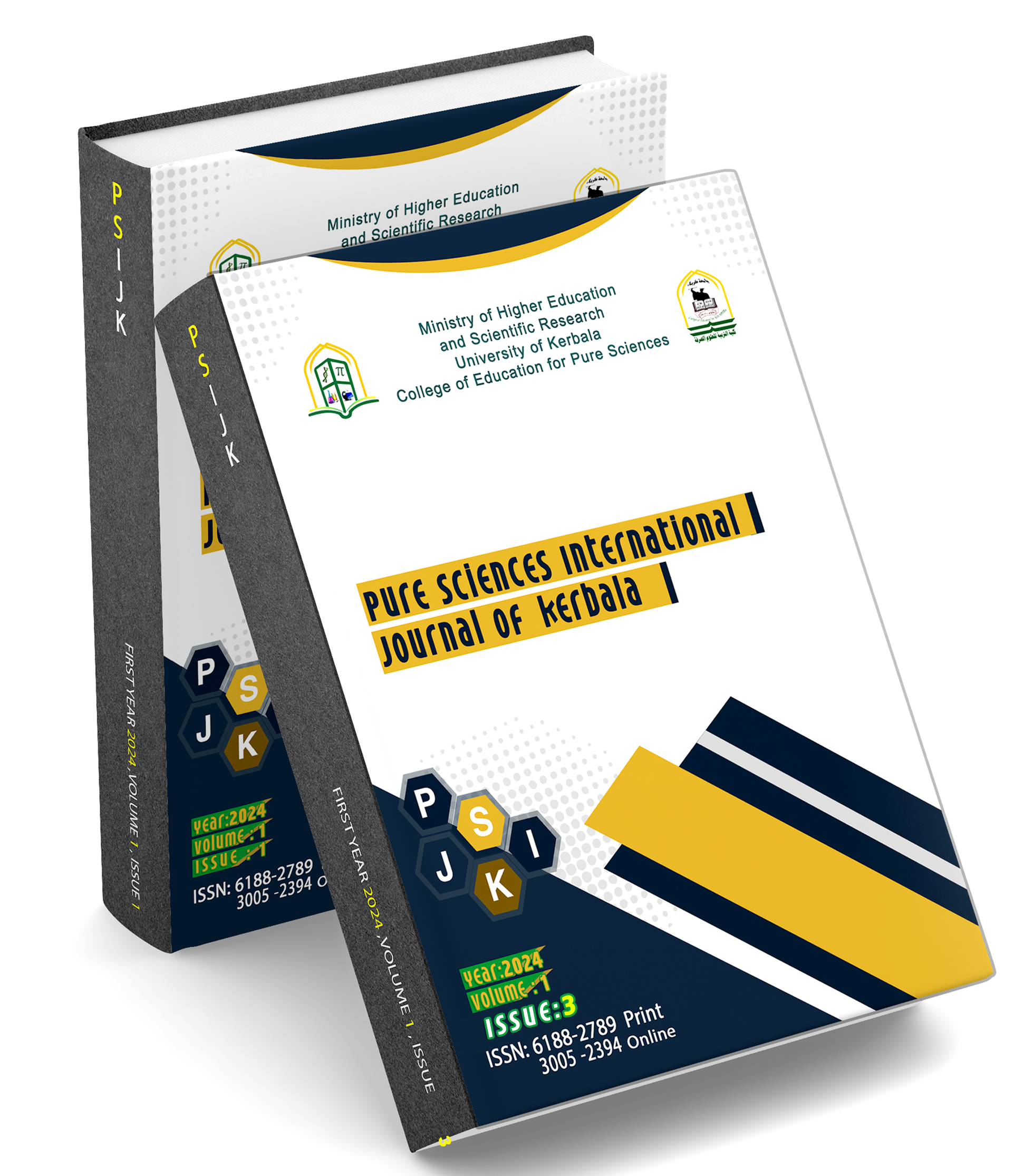Preparation and Diagnosis of Green Nanocomposite from Salvia Officinalis and Study of its Inhibitory Effectiveness on Resistant Bacteria Isolated from Different Clinical Cases
الكلمات المفتاحية:
Antibacterial activity، Green synthesis، Nanotechnology، Salvia officinalis، Silver nanoparticlesالملخص
The current research aims to prepare the aqueous extract and nanocomposite of sage leaves using green synthesis method, and to identify the silver nanoparticles using FTIR and SEM analysis. The antibiotic ciprofloxacin was loaded on the nanocomposite and the inhibitory activity on the studied bacterial isolates G-ve Klebsiella pneumoniae and Pseudomonas aeruginosa was studied. The study groups were divided into two replicates and five groups with three concentrations. The first group was treated with the antibiotic ciprofloxacin, the second group was treated with the aqueous extract of sage, and the nanocomposite was applied to the third group. The extract loaded with the antibiotic was used to treat the fourth group, and the nanocomposite loaded with the antibiotic was used to treat the fifth group. The color change from yellow to dark brown is evidence of the formation of nanoparticles, and the wave shift in the nanocomposite loaded with the antibiotic towards the frequency 2156.93 cm^(-1) is evidence of the success of the antibiotic loading process on the nanocomposite. The resulting compounds were characterized using scanning electron microscopy, and its results showed that the extract particles were in the form of irregular aggregates with the presence of some small particles with a spherical shape and an average particle size of 85.49 nm, while the nanocomposite was cubic in shape and an average particle size of 35.42 nm. The inhibition zones were evident in the fourth treatment T4, the aqueous extract loaded with the antibiotic, and the fifth treatment T5, the nanocomposite loaded with the antibiotic. Silver nanoparticles showed the highest synergistic efficiency with the antibiotic ciprofloxacin against the multidrug-resistant. bacteria strain K.pneumoniae, recording a rate of 14.33±1.41, while against P.auroginosa bacteria, a rate of 13.44±88 was recorded.





